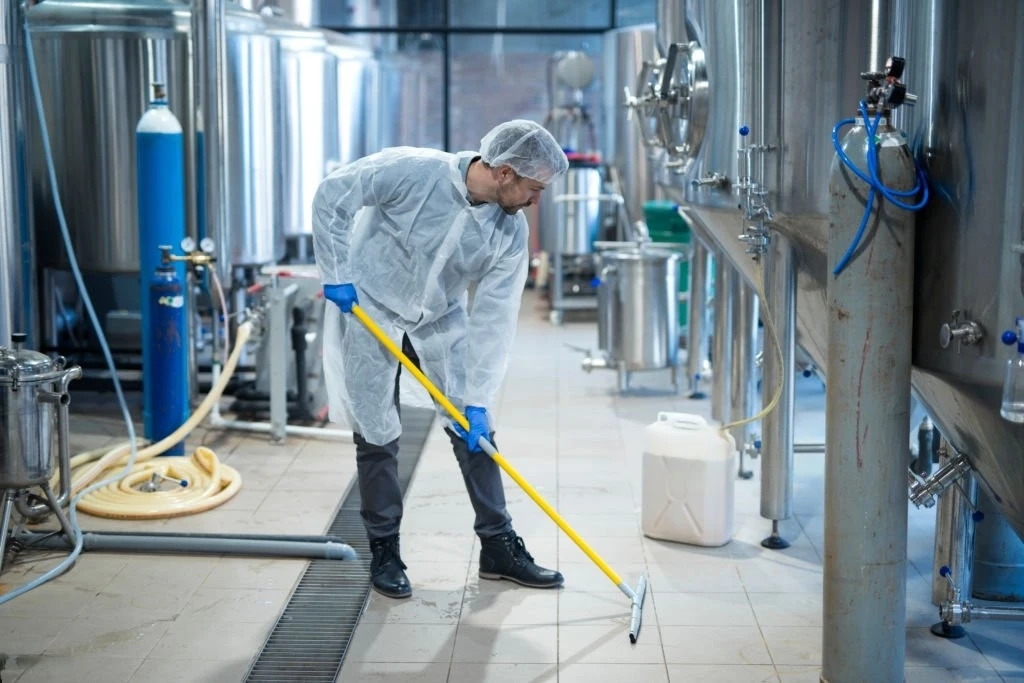In an age where sustainability and industrial growth coalesce, managing environmental footprints cannot be overstated. One such footprint, often overlooked, is the odour emitted by diverse industries. Though sometimes benign, these odours can have significant environmental impacts and affect the quality of life of those in proximity. The challenge is clear: How can industries continue to thrive while being environmentally conscious? This blog will give you all the possible answers to this question. So, shall we?
Evaluating Your Odour Control Needs

Identifying the Types of Odours
Odours play a fundamental role in our sensory experiences, particularly when we talk about industrial settings. The nature of an odour can offer crucial insights about a facility’s environmental management. In sectors such as wastewater treatment, petrochemicals, and especially food processing odour control, specific smells often signal the presence of underlying chemical reactions and the effectiveness or lack of mitigation strategies.
To accurately pinpoint the types of odours, it’s vital to deploy advanced sensing techniques. For example, a seafood processing unit might emit a different odour profile than a paper mill. By identifying these unique signatures, businesses can better address their environmental footprint and optimize their operations.
Measuring Odour Concentrations
Measuring the concentration of odours is as critical as identifying them. It’s one thing to know that an odour exists, but quite another to understand its intensity and potential implications. This is where advanced odour monitoring systems come into play.
Imagine a chemical factory that occasionally emits a sulphuric scent. Without quantifying this smell, it’s challenging to know if this odour breaches safe levels or if it’s just a mild inconvenience. By deploying devices like Oizom’s odour monitoring system, businesses can obtain real-time data on odour concentrations. Such accurate data allows them to take timely corrective actions, ensuring the well-being of both the environment and the surrounding community.
Regulatory Requirements
Being on the right side of the law is non-negotiable. Various countries and regions have strict regulations concerning odour emissions. These rules might pertain to the type, concentration, or duration of odour emissions. Being abreast with these ensures compliance and helps foster good community relations.
Sizing the System Appropriately
Choosing the correct size for an odour monitoring system is crucial. A small dairy farm would have different requirements than a large-scale municipal waste treatment facility. The system’s size determines its capability to capture, analyze, and report odour data efficiently.
For instance, an expansive landfill site might require multiple monitoring stations to provide a comprehensive view of odour concentrations across its expanse. In contrast, a boutique brewery might need just a single, strategically placed unit. Here, collaborating with seasoned experts like those at Oizom ensures that businesses get a system tailored to their precise needs.
Whether you’re keen on improving your industry’s environmental image, or just aiming to adhere to regulatory standards, understanding and managing odours is indispensable. By employing advanced solutions like Oizom’s odour monitoring systems, industries can achieve a perfect blend of compliance, efficiency, and environmental stewardship.
Once the odour’s nature and magnitude are understood, and regulatory guidelines are clear, the focus shifts to the system. Ensuring that the odour control system’s size and capacity match the industry’s requirements is crucial. Both oversizing and undersizing come with their own set of challenges and inefficiencies.
For instance, if a small-scale brewery producing odorous emissions, installed a large-scale odour control system designed for bigger industries might lead to unnecessary capital expenditure and operational costs.
You can also See : How to Select the Right Air Quality Monitor
Selecting the Right Odour Control Technology Comparing Different Technologies
The odour control landscape is awash with diverse technologies, each suited for specific types and concentrations of odours. The choices are vast, from bio-filters that use microorganisms to break down organic odours to chemical scrubbers designed to neutralize acidic or alkaline emissions.
So, a fish processing plant, dealing primarily with organic odours, might benefit immensely from a bio-filter system. In contrast, a factory dealing with acidic effluents might need a chemical scrubber.
Odour Removal Efficiency
With the technology selected, the focus shifts to efficiency. Here, the adage “what gets measured, gets managed” rings true. It is imperative to have systems that promise high odour removal rates and deliver on these promises consistently. Periodic assessments, calibrations, and the use of tools like Oizom’s odour monitors can ensure that the systems operate at peak efficiency.
Consider a large landfill site. While the odour control system might claim a removal efficiency of 95%, periodic evaluations might reveal occasional dips. Such insights can lead to timely interventions, ensuring consistent performance.
Outlet Parameters
An often-overlooked aspect of odour control is the by-products or residuals. A truly comprehensive system should control odours and ensure that the residuals are environmentally benign.
An odour control system at a wastewater treatment plant might effectively control the smell but produce sludge as a by-product. It’s essential to ensure this sludge is treated and disposed of responsibly.
Capital and Operating Costs
While environmental responsibility is paramount, economic feasibility cannot be ignored. It’s vital to strike a balance between the system’s efficiency and its cost. This includes both the initial capital investment and the recurring operational costs.
For instance, an advanced ozone treatment system might have a higher upfront cost but could offer lower operational costs in the long run, making it a viable choice for certain industries.
Conclusion
In the evolving narrative of industrial growth, odour control stands out as a testament to industries’ commitment to sustainability and community welfare. As we have explored, the journey to effective odour control is multifaceted, involving understanding the odour, measuring it, adhering to regulations, and finally, selecting and maintaining the right control system.
Oizom’s air quality monitors are pivotal in this journey. By offering real-time, accurate monitoring, they empower industries to be proactive rather than reactive. This ensures regulatory compliance and positions the industry as a responsible community player.
Beyond the tangible benefits of odour control, there is an intangible yet crucial aspect – goodwill. In an era where community relations can make or break industries, being a conscientious industry player who respects and cares for its neighbors’ well-being can be a significant differentiator.
Embrace odour control not just as a regulatory mandate but as a commitment to a cleaner, greener, and more harmonious future. And in this endeavor, let technology be your ally. Tools like Oizom, with their cutting-edge capabilities, are not just assets; they are partners in the journey towards sustainable growth.
Ready to redefine your odour control strategy? Connect with Oizom’s experts today and chart a course towards a sustainable future.






